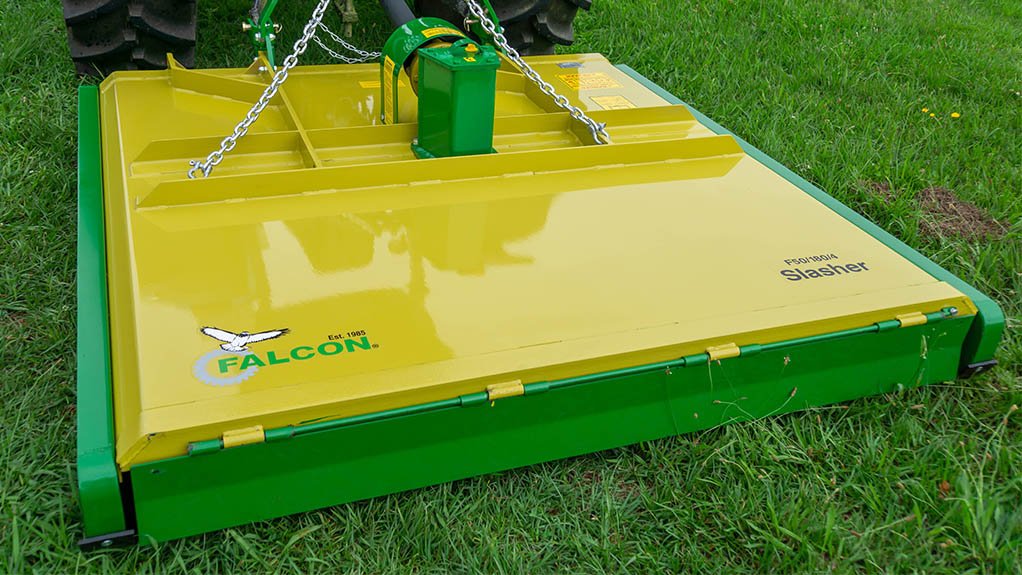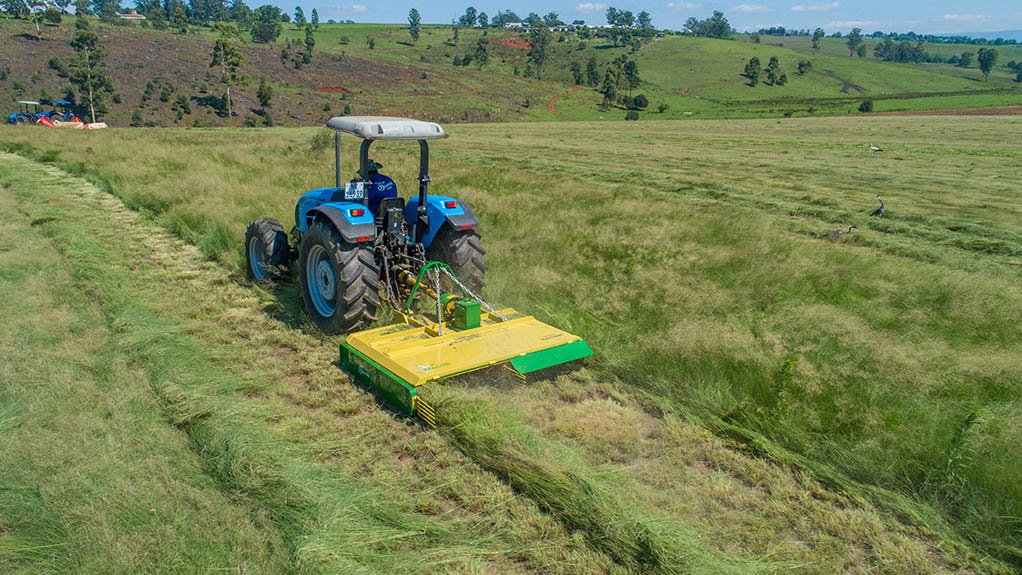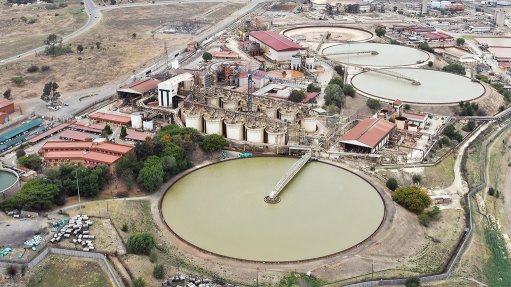Falcon rotary cutters’ local content still significant after almost 40 years
Since being introduced in 1985, the traditional rotary cutters in the Falcon range – consisting predominantly of the Slasher and trademark-protected Haymaker – still maintain local content upward of 90%.
Initially comprising 100% local content by necessity, owing to political sanctions, over the years, rotary cutter manufacturer Falcon Agricultural Equipment has complemented its products with premium imported agricultural components from specialised European manufacturers as the opportunity to do so improved, explains Falcon technical and research and development manager Russel Jerome.
Started in the early 1980s as a small engineering works doing occasional jobs for companies in Pietermaritzburg – predominantly in the agriculture industry – the company quickly evolved into a locally-built agricultural equipment supplier.
Inspired by a highly competitive cost advantage in the local replication of existing imported products, Jerome says the initial development of the company’s rotary cutter range was a commercialisation exercise using existing, proven agricultural solutions.
“The challenges lay in the establishment of a dedicated gearbox manufacturing facility with the capability to produce all constituent components at sufficient volumes for production and aftermarket consumption.”
Specialised bevel gear production was also required, including the processing of components from special steels and pre-forged raw materials, among other aspects.
The company was transformed into a “true original-equipment manufacturer (OEM)” employing a sophisticated business-to-business (B2B) trading model in 1987, when it was acquired by the family of Peter Nisbet.
“Subsequently, the Falcon brand was born, consisting primarily of South African designed tractor-mounted rotary cutters of various categories and types, and predominantly locally sourced materials,” says Jerome.
He highlights that Falcon has grown into one of the largest manufacturers of rotary cutters in the southern hemisphere in recent years. Today, the Falcon F60/450 Flexwing Slasher is South Africa’s largest locally manufactured rotary cutter and has been designed specifically for the country’s tough conditions.
“Demand for these products is driven by the desirability of the Falcon brand and the premium nature of these products.”
Falcon’s rotary cutters remain desirable as end-users are able to procure OEM parts locally from appointed dealers and benefit from an increased operating life, owing to extended aftermarket support.
The company also employs a continual improvement programme, whereby design and functionality enhancements are made to products. Additionally, Falcon is focused on improving internal efficiencies and protecting the product value model amid raw material price increases and supply chain challenges. Manufacturing and other process improvements have been realised, with cost savings passed on to the end-user, says Jerome.
At Falcon’s facility in Howick, KwaZulu-Natal, 80 people are involved in manufacturing a greater product portfolio of about 100 different products, including 1 800 to 2 000 rotary cutters a year.
Firstly, the fabrication department undertakes material processing, welding, press-forming, and anticorrosion treatment of implement decks, chassis and other major structural elements.
Next, the machining department carries out computer numerically controlled machining and processing of gearbox components from specialised materials, gearbox casings and other rotating components.
Lastly, the assembly department performs final assembly, inspection and testing, and the consignment of loads for distribution to appointed dealers throughout South Africa.
The company exports throughout Southern Africa to areas where its appointed South Africa-based dealers have already established themselves, or through high-profile independent foreign dealerships that have sufficient reputation and influence required for appointment.
“Falcon dominates the rotary cutter market in which it participates and, as a B2B trading enterprise with a large territorial footprint, we experience a naturally self-regulating demand pattern,” states Jerome.
Article Enquiry
Email Article
Save Article
Feedback
To advertise email advertising@creamermedia.co.za or click here
Announcements
What's On
Subscribe to improve your user experience...
Option 1 (equivalent of R125 a month):
Receive a weekly copy of Creamer Media's Engineering News & Mining Weekly magazine
(print copy for those in South Africa and e-magazine for those outside of South Africa)
Receive daily email newsletters
Access to full search results
Access archive of magazine back copies
Access to Projects in Progress
Access to ONE Research Report of your choice in PDF format
Option 2 (equivalent of R375 a month):
All benefits from Option 1
PLUS
Access to Creamer Media's Research Channel Africa for ALL Research Reports, in PDF format, on various industrial and mining sectors
including Electricity; Water; Energy Transition; Hydrogen; Roads, Rail and Ports; Coal; Gold; Platinum; Battery Metals; etc.
Already a subscriber?
Forgotten your password?
Receive weekly copy of Creamer Media's Engineering News & Mining Weekly magazine (print copy for those in South Africa and e-magazine for those outside of South Africa)
➕
Recieve daily email newsletters
➕
Access to full search results
➕
Access archive of magazine back copies
➕
Access to Projects in Progress
➕
Access to ONE Research Report of your choice in PDF format
RESEARCH CHANNEL AFRICA
R4500 (equivalent of R375 a month)
SUBSCRIBEAll benefits from Option 1
➕
Access to Creamer Media's Research Channel Africa for ALL Research Reports on various industrial and mining sectors, in PDF format, including on:
Electricity
➕
Water
➕
Energy Transition
➕
Hydrogen
➕
Roads, Rail and Ports
➕
Coal
➕
Gold
➕
Platinum
➕
Battery Metals
➕
etc.
Receive all benefits from Option 1 or Option 2 delivered to numerous people at your company
➕
Multiple User names and Passwords for simultaneous log-ins
➕
Intranet integration access to all in your organisation





















